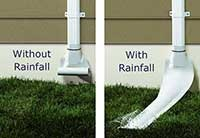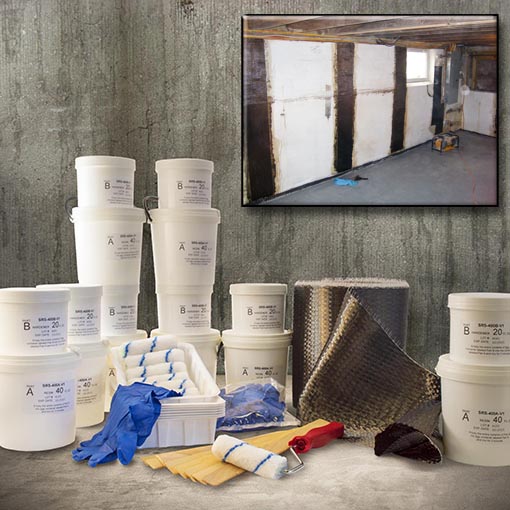The Fall season is upon us, bringing the changing of tree leaves and cooler weather everywhere (yay!). But for many parts of the country, Fall also brings moisture, which can be damaging for your foundation.
Let me clarify. Moisture isn’t bad for your foundation. In fact, in dry conditions, it’s imperative to make sure your foundation gets enough water. But what can be damaging for your foundation is the transition from dry seasons to wet ones (and vice versa).
Many homes in the United States are built on clay soil, which is expansive. When it’s wet, the soil expands, and when it’s dry, it contracts. And when it contracts, the ground is actually shrinking, causing your foundation to settle. But the soil that’s on the outskirts of your home and foundation will dry out and contract much faster than the soil that’s directly beneath your home, causing differential settlement, which can badly damage your foundation.
The key to keeping your foundation in its healthiest form is all about water: avoid too much water in the winter (or wet seasons), and too little in the summer (or dry seasons).
Here are some tips to help you prevent water damage to your foundation:
- Raingutters. I know they can look ugly, but raingutters are vital to directing water away from your home. Where possible, go for seamless aluminum gutters, as they are durable and trustworthy. And make sure that they’re clear of debris. Direct your downspouts as far away from your home as possible. You can even attach an additional drainpipe, buried underground, that directs water even further away, but be careful not to dump all that water into your neighbor’s yard.
 Rain Drain. This is a great alternative to attaching a drainage pipe to your rain gutters. It’s simply a coiled, UV-resistant vinyl tube that attaches to your downspout, and when it rains, the tube automatically unrolls to direct water 46 inches away from the foundation. When it stops raining, the rain drain will automatically re-coil, resting right next to your home.
Rain Drain. This is a great alternative to attaching a drainage pipe to your rain gutters. It’s simply a coiled, UV-resistant vinyl tube that attaches to your downspout, and when it rains, the tube automatically unrolls to direct water 46 inches away from the foundation. When it stops raining, the rain drain will automatically re-coil, resting right next to your home.- Grading. When rain falls next to your home, you want it to roll away, not toward, your foundation. Make sure that the ground is flat, smooth, and gently sloped away from your home.
- Sealing. Look for cracks in your foundation, and seal them immediately. Even the slightest amount of water running down your outside walls could result in moisture inside. StrongHold carries two fantastic crack injection kits, as well as a crack repair carbon fiber kit that will resist the forces that caused the cracks in the first place.
- French Drains or Sump Pumps. French drains and sump pumps should honestly be used as a last resort. Not only are they expensive, but they require several other components (French drains will require a sump to collect the water, a pump to pump it out of your basement, and a “break box” to break the pressure and gradually drain the water using gravity) and are very difficult to maintain. If there’s an electricity issue or your pump goes out, the system is hidden underground and is very difficult to work on. And if you have enough water beneath your home to require a sump pump, the foundation damage has probably already been done, in which case you’ll need to contact a foundation contractor.
Paying close attention to your foundation’s condition could mean the difference between a safe home and an unsafe one. Use these tips as guidelines, and contact a foundation professional if you notice any changes to your foundation.


